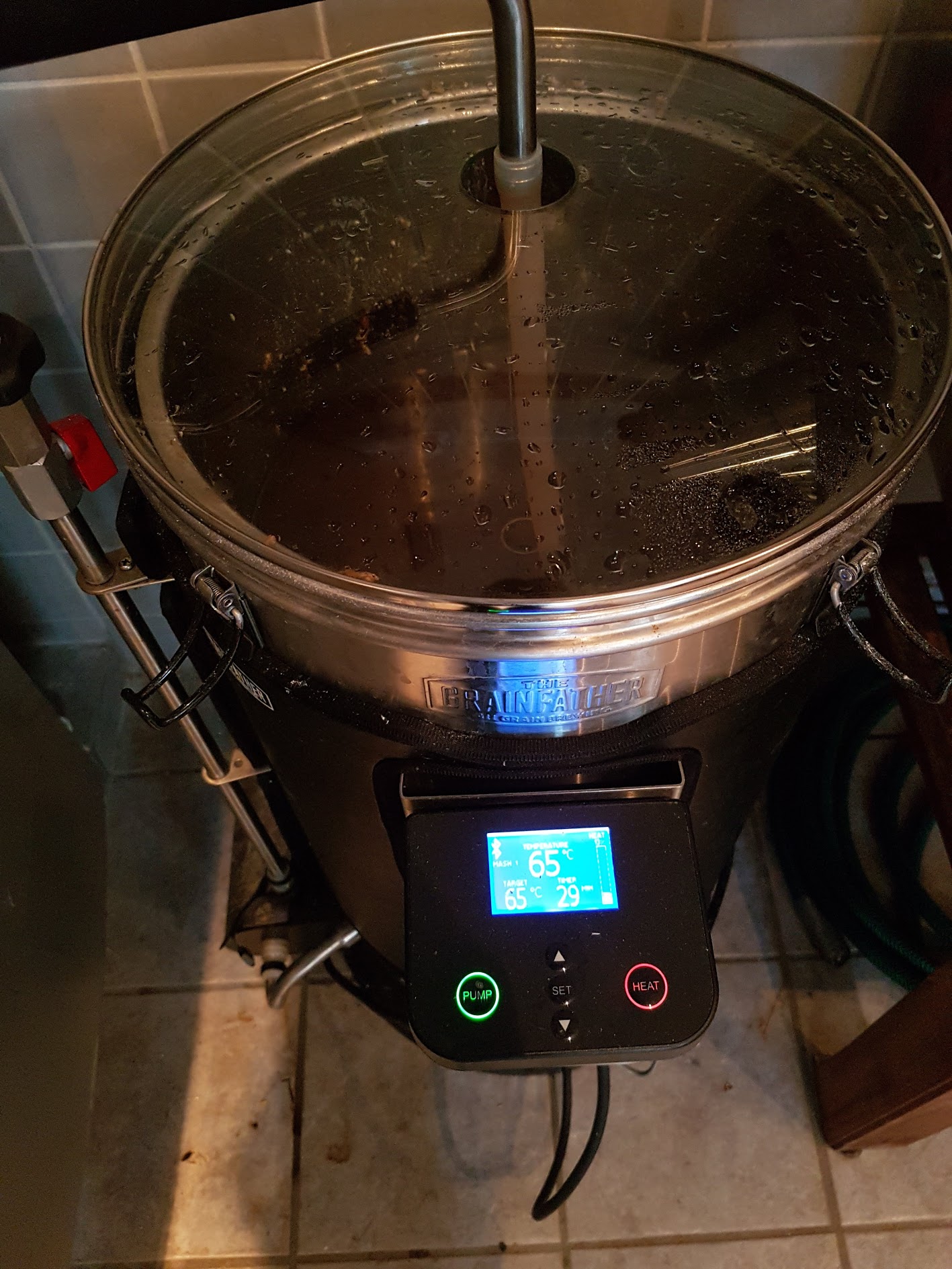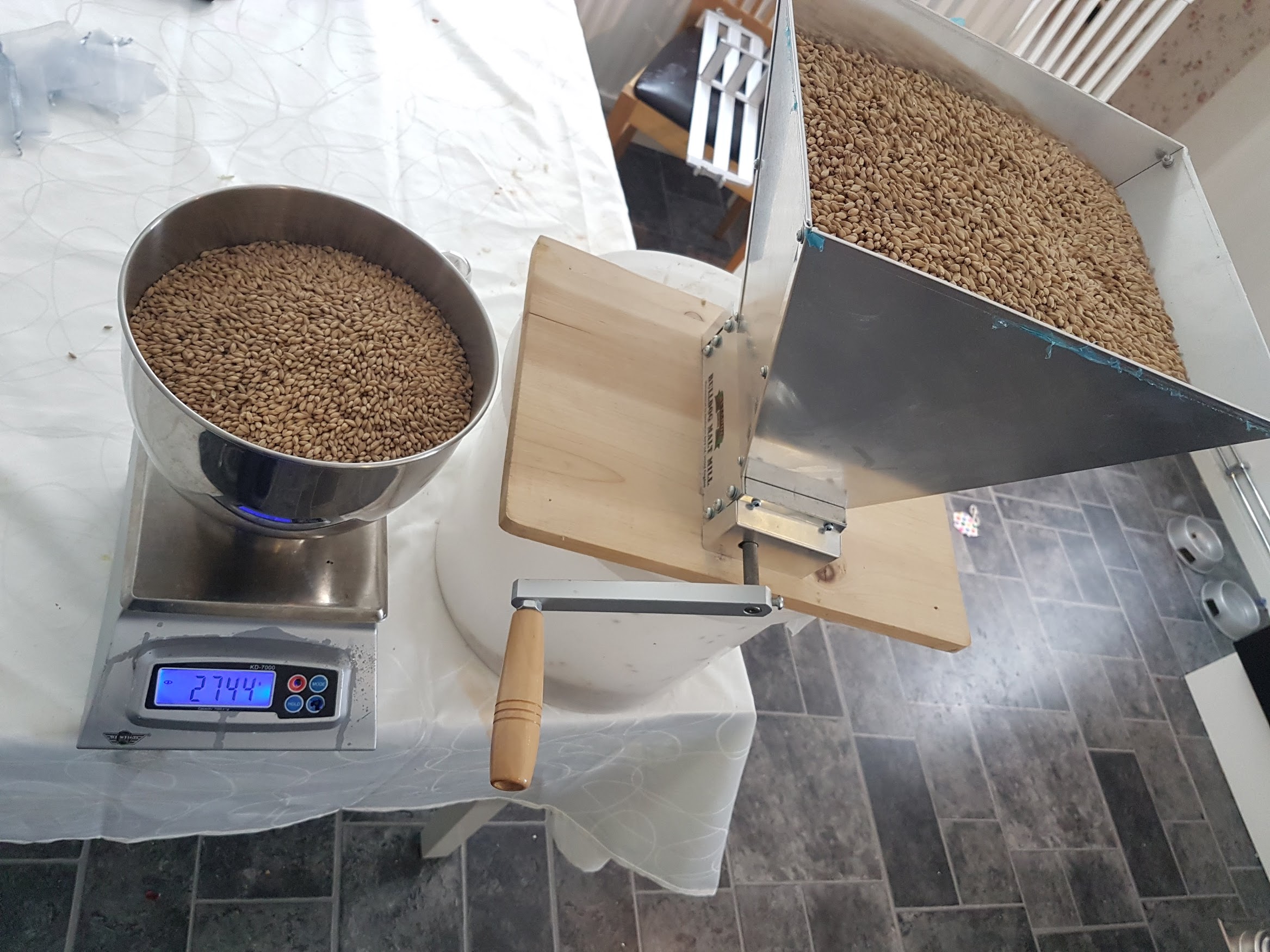| Amarillo |
9.20 percent |
9.55 grams |
Mash |
60.00min |
Discovered and introduced by
Vigil Gamache Farms Inc. in
Washington State. Character
similar to Cascade. Often
used as a late kettle or
dry hop addition to American
style Pale Ales and IPA’s
due to its signature aroma
characteristics. Used for
both bitterness and aroma.
Used for: IPAs, Ales Aroma:
Intensely fruity (citrus,
melon, and stone friuts),
floral, tropical notes.
Substitutes: Cascade,
Centennial, Simcoe Storage:
Good 8-11% AA / 6-7% Beta |
| Herkules |
14.50 percent |
4.30 grams |
Boil |
60.00min |
A German high alpha cross
variety, bred in Huell and
released in 2005. Imparts
robust, hoppy tang flavors.
Used for: hoppy German-style
ales or lagers Aroma: Spicy
floral and hop notes, with
hints of pine, lemon and black
pepper. Substitutions: Unknown
Storage: Good 13-17% AA /
4-5.5% Beta |
| Amarillo |
9.20 percent |
13.38 grams |
Boil |
30.00min |
Discovered and introduced by
Vigil Gamache Farms Inc. in
Washington State. Character
similar to Cascade. Often
used as a late kettle or
dry hop addition to American
style Pale Ales and IPA’s
due to its signature aroma
characteristics. Used for
both bitterness and aroma.
Used for: IPAs, Ales Aroma:
Intensely fruity (citrus,
melon, and stone friuts),
floral, tropical notes.
Substitutes: Cascade,
Centennial, Simcoe Storage:
Good 8-11% AA / 6-7% Beta |
| Amarillo |
9.20 percent |
13.38 grams |
Boil |
25.00min |
Discovered and introduced by
Vigil Gamache Farms Inc. in
Washington State. Character
similar to Cascade. Often
used as a late kettle or
dry hop addition to American
style Pale Ales and IPA’s
due to its signature aroma
characteristics. Used for
both bitterness and aroma.
Used for: IPAs, Ales Aroma:
Intensely fruity (citrus,
melon, and stone friuts),
floral, tropical notes.
Substitutes: Cascade,
Centennial, Simcoe Storage:
Good 8-11% AA / 6-7% Beta |
| Amarillo |
9.20 percent |
11.46 grams |
Boil |
20.00min |
Discovered and introduced by
Vigil Gamache Farms Inc. in
Washington State. Character
similar to Cascade. Often
used as a late kettle or
dry hop addition to American
style Pale Ales and IPA’s
due to its signature aroma
characteristics. Used for
both bitterness and aroma.
Used for: IPAs, Ales Aroma:
Intensely fruity (citrus,
melon, and stone friuts),
floral, tropical notes.
Substitutes: Cascade,
Centennial, Simcoe Storage:
Good 8-11% AA / 6-7% Beta |
| Amarillo |
9.20 percent |
11.46 grams |
Boil |
15.00min |
Discovered and introduced by
Vigil Gamache Farms Inc. in
Washington State. Character
similar to Cascade. Often
used as a late kettle or
dry hop addition to American
style Pale Ales and IPA’s
due to its signature aroma
characteristics. Used for
both bitterness and aroma.
Used for: IPAs, Ales Aroma:
Intensely fruity (citrus,
melon, and stone friuts),
floral, tropical notes.
Substitutes: Cascade,
Centennial, Simcoe Storage:
Good 8-11% AA / 6-7% Beta |
| Amarillo |
9.20 percent |
5.73 grams |
Boil |
5.00min |
Discovered and introduced by
Vigil Gamache Farms Inc. in
Washington State. Character
similar to Cascade. Often
used as a late kettle or
dry hop addition to American
style Pale Ales and IPA’s
due to its signature aroma
characteristics. Used for
both bitterness and aroma.
Used for: IPAs, Ales Aroma:
Intensely fruity (citrus,
melon, and stone friuts),
floral, tropical notes.
Substitutes: Cascade,
Centennial, Simcoe Storage:
Good 8-11% AA / 6-7% Beta |
| Amarillo |
9.20 percent |
36.00 grams |
Boil |
0.00min |
Discovered and introduced by
Vigil Gamache Farms Inc. in
Washington State. Character
similar to Cascade. Often
used as a late kettle or
dry hop addition to American
style Pale Ales and IPA’s
due to its signature aroma
characteristics. Used for
both bitterness and aroma.
Used for: IPAs, Ales Aroma:
Intensely fruity (citrus,
melon, and stone friuts),
floral, tropical notes.
Substitutes: Cascade,
Centennial, Simcoe Storage:
Good 8-11% AA / 6-7% Beta |


